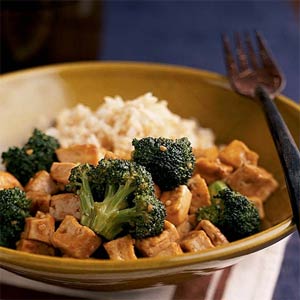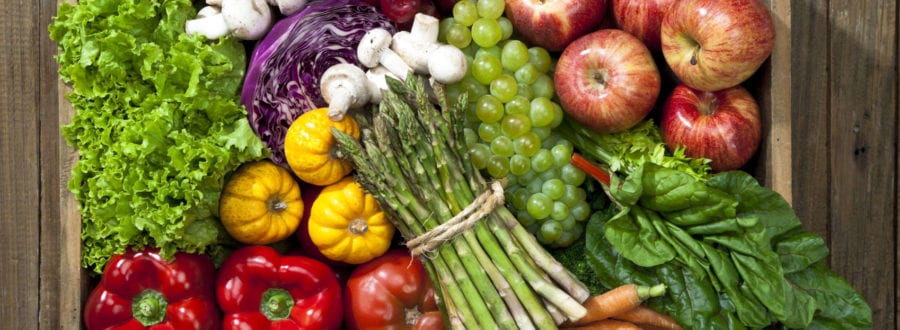National Nutrition Month!
Healthy eating is an important part of a healthy lifestyle. It will help keep you looking good and feeling great! Follow these simple guidelines to help you eat well.
- Go for Whole Grains
Make at least half your grain choices whole grains. Examples of whole grains are whole grain wheat, whole oats or oatmeal, pot barley and bulgur. Whole grains are higher in vitamins, minerals and phytonutrients (natural plant compounds) than refined grains. Research shows that a diet rich in whole grains is heart healthy.
Quick Tips:
- Start your day with a bowl of whole grain cereal
- Make sandwiches with whole grain bread or rolls
- Add barley, lentils, kidney beans or brown rice to soups and stews
- Substitute whole-wheat flour for all or part of the white flour when baking
- Choose whole-grain crackers
- Use whole grain pasta
- Load Up on Vegetables and Fruit
Vegetables and fruit are packed with nutrients and fiber, so enjoy a wide variety of them. Try to include at least one dark green and one orange veggie daily.
Quick Tips:
- Try a new vegetable or fruit each week
- Sprinkle some berries over whole grain cereal at breakfast
- Pack a couple pieces of fruit and some raw veggies with your lunch
- Start dinner with a salad of dark greens such as spinach
- Fill half your plate with vegetables at dinner
- Add a handful of spinach or kale to a fruit smoothie
- Make Your Day with Milk Products
Milk products are packed with protein, calcium and B vitamins. And they’re delicious! Enjoy 500mL (2 cups) of milk or fortified soy beverage every day for bone-boosting vitamin D.
Quick Tips:
- Add milk to soups, casseroles and other home-prepared dishes
- Add defrosted frozen raspberries to plain low fat Greek yogurt for a tasty breakfast
- Bring a few small cheese cubes along with whole grain crackers to work for a quick snack
- Have a frothy latte instead of a cup of coffee for your morning break
- Enjoy a small bowl of whole grain cereal with milk as an after dinner snack
- Go Lean & Alternative!
Meat and meat alternatives are a good source of protein, iron, zinc and other nutrients. Make lean choices and prepare them with little or no added fat. Enjoy alternatives like legumes (kidney beans, chick peas and lentils) and tofu often.
Quick Tips:
- Bake, roast or poach meat, fish and poultry
- Enjoy at least two servings a week of fatty fish like salmon, trout and mackerel
- Try meatless meals such as lentils with rice, omelets, or tofu burgers
- Keep boiled eggs in the fridge for handy, quick snacks
- Sprinkle seeds on stir-fry’s and salads or enjoy a handful of nuts for a protein-filled snack
- Choose Healthier Fats
Fats and oils add a lot of flavour to food, and they help us absorb some nutrients. But diets higher in unhealthy fats are also linked to health risks such heart disease. Enjoy a small amount – 30 to 45 mL (2 to 3 Tbsp.) – of healthier unsaturated fat each day. Limit saturated and trans fats.
Healthier unsaturated fats come from foods such as avocados, nuts and seeds as well as oils such as olive, canola, flaxseed or nuts oils.
Quick Tips
- Reduce the oil and add a splash of flavoured vinegar or fresh lemon juice to salad dressings.
- Try a little mashed avocado on sandwiches instead of butter or mayonnaise.
- Use herbs and spices to season your food without fat.
- Use small amounts of vegetable oils, such as canola or olive oil instead of butter for stir-frying or sautéing.
- Nibble on a small handful of almonds or walnuts with a piece of fruit for a simple snack
Source: www.dietitians.ca
.
March 22, 2017 – International Water Day!
Water It Down—The Need-to-Know
Water is the second most popular beverage in Canada after soft drinks. This is a scary stat, since sugary soda is a huge health hazard, upping the risk of obesity, stroke, and other heart problems. However, these dangers can be avoided if people choose to drink water, which doesn’t have negative side effects. So help put the sugary stuff to the side and make water the number one drink of choice. The benefits really are endless. (Just take a look!)
Fluid balance
Roughly 60 percent of the body is made of water. Drinking enough H2O maintains the body’s fluid balance, which helps transport nutrients in the body, regulate body temperature, digest food, and more.
Calorie control
Forget other diet tricks—drinking water could also help with weight loss. Numerous studies have found a connection between water consumption and losing a few pounds. The secret reason? Water simply helps people feel full, and as a result consume fewer calories.
Muscle fuel
Sweating at the gym causes muscles to lose water. And when the muscles don’t have enough water, they get tired. So for extra energy, try drinking water to push through that final set of squats.
Clearer skin
Certain toxins in the body can cause the skin to inflame, which results in clogged pores and acne. While science saying water makes the skin wrinkle free is contradictory, water does flush out these toxins and can reduce the risk of pimples.
Kidney function
Our kidneys process 200 quarts of blood daily, sifting out waste and transporting urine to the bladder. Yet, kidneys need enough fluids to clear away what we don’t need in the body. Let’s drink to that!
Productivity boost
In order to really focus, a glass of water could help people concentrate and stay refreshed and alert.
Fatigue buster
Move over coffee—water can help fight those tired eyes too. One of the most common symptoms of dehydration is tiredness. Just another reason to go for the big gulp! (Not the 7-11 kind.)
Pain prevention
A little water can really go a long way. Aching joints and muscle cramps and strains can all occur if the body is dehydrated.
Keep things flowing
Nobody wants to deal with digestion issues. Luckily, drinking enough water adds fluids to the colon which helps make things, ahem, move smoothly.
Sickness fighter
Water may help with decongestion and dehydration, helping the body bounce back when feeling under the weather. Just beware—drinking fluids hasn’t been scientifically proven to beat colds in one swoop, so don’t swap this for a trip to the doctor or other cold remedies.
Brain boost
A study in London found a link between students bringing water into an exam room and better grades, suggesting H2O promotes clearer thinking. While it’s unclear if drinking the water had anything to do with a better score, it doesn’t hurt to try it out!
Source: http://greatist.com/health/reasons-to-drink-water
Healthy Living Tip:
Pick exercises you enjoy. When you enjoy the sports, you’ll naturally want to do them. Exercise isn’t about suffering and pushing yourself; it’s about being healthy and having fun at the same time. Adding variation in your exercises will keep them interesting
Healthy Transformations

| Ingredients |
| 1 Tbl sherry |
| 1 Tbl soy sauce, lite |
| 1 tsp garlic |
| ⅛ tsp Stevia (optional) |
| ½ tsp ginger |
| 8 oz tofu, extra firm |
| ¾ cup water chestnuts |
| 1 cup chick/veggie stock |
| 1 ½ cups broccoli |
| ½ cup rice, brown cooked |
| ¼ cup onion |
| ¼ cup mushrooms |
| ½ tsp oil, high oleic safflower |
| ½ Tbl peanuts |
Spices / Flavoring |
| ¼ tsp cayenne pepper |
| Preparation: Prepare rice as directed on package and keep warm. |
Heat wok or large skillet over medium heat. Add oil and spread in wok/skillet. Stir-fry cubed tofu in oil until golden, about 4 minutes. Remove.
Stir-fry sliced broccoli, onion, mushrooms, ginger, and garlic until crisp tender, about 5 minutes. Stir in water chestnuts and tofu. Add vegetable broth and heat to boiling.
Mix soy sauce, sherry, Splenda, and pepper. Add mixture to wok and cook, stirring constantly until liquid reduces by half.
Serve over rice. Sprinkle with peanuts. Garnish with red pepper.
Enjoy!
Per serving: 457 calories, 32g protein, 17g total fat, 44g carbohydrates.
Source: Healthy Transformations Recipes









